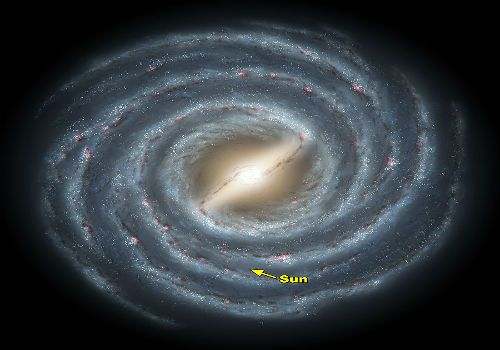Big is a description for an elephant, a blue whale, a fat man or a good heart. Vast is for the oceans, for forests and mountains. Immense describes things that are out of this world – asteroids, planets, black holes, quasars and star systems. These things we only see in pictures or at times when we look up in the night sky.
If you’re looking for something that shall remind you how small your existence is, then try stargazing at night some times. If the sky is not totally cloudy, you should be able to see a million objects, images and figures. Then you’ll probably say that you’re just a speck of dust in all existence. Then I’d tell you that you’re thinking is wrong. You’re probably smaller than what’s smaller than a speck of dust. By seeking knowledge throughout the course of astronomy, we have compiled the ten most immense thing found in space.
10. Jupiter. Biggest planet (142,984 km diameter)
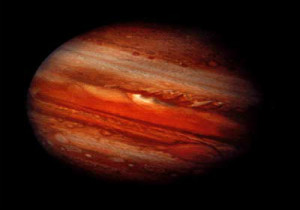
Jupiter, with a diameter of 142, 984 kilometers, is the largest planet in our solar system. It also the fifth planet from the sun. It’s big enough to host 67 known satellites and 4 known rings. Its diameter is 11 times that of the diameter of Earth and its 318 heavier than our home planet. Imagine a collection of 1300 Earths placed side by side to create a very large sphere; that is the size of Jupiter. Even though, Jupiter is large, it has the shortest day of all planets. One day in Jupiter is equal to nine hours and 55 minutes. This rotation gives this gas giant an oblate shape.
9. The Sun. Biggest object in our solar system (1,391,980 km diameter)

Our sun is a yellow dwarf star, a relatively small star compared to others outside our solar system. Its diameter of 1, 391, 980, however, makes it the largest object in our solar system. Its mass is 1,989,100,000,000,000,000,000 billion kilograms or 333, 060 times more massive than the Earth. This mass is also 99.98% of the total mass of the solar system. Jupiter actually comprises most of the rest. It is believed that the sun is so large that 960, 000 Earths placed side by side could fit in it. If the fitted Earths were squished, approximately 1, 300, 000 Earths would occupy its massive space.
8. Our solar system.15x1012km diameter
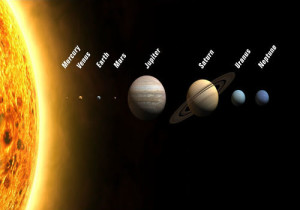
The solar system, for sure, would definitely be larger than Jupiter and the Sun. Our solar system along with its components formed 4.6 billion years ago by the collapse of a giant molecular cloud which became the sun and a flat disk which became the planets. The solar system has four inner planets, also known as terrestrial planets which are composed of rock and metal, namely Mercury, Earth, Venus, and Mars. The outer planets namely Jupiter, Saturn, Uranus, Neptune are also called gas giants. The two innermost gas giants are mainly made up of hydrogen and helium like our sun. The outermost gas giants are mainly composed of ice which is mixture of water, ammonia and methane. The solar system has also other components such as asteroids and the asteroid belt found between Mars and Jupiter.
7. VY CMa.Biggest star in the universe (3 billion km diameter)
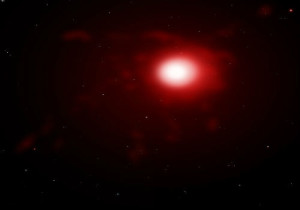
Canis Major was first recorded by a French astronomer in 1801. It is actually a red hypergiant, an extremely rare type of star found in the universe. Its diameter of 3 billion kilometers make sun look microscopic. In fact, its radius is estimated to be 1800 – 2200 times that of the radius of the sun. It is believed that if Canis Major was place in the center of our solar system, its surface will touch where Saturn is right now. Unlike our sun, Canis Major is expected to last for only a few million years. It is also believed that at its death, its size is big enough to create a massive black hole which would suck everything including light.
6. Most water ever found
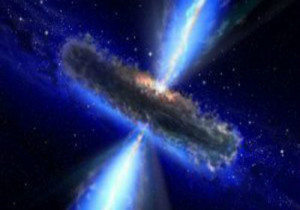
Two astronomers discovered the largest and farthest reservoir of water ever known in the universe. The water was said to have come from a feeding black hole called a quasar 12 billion light years away. The quasar eats up dust and other cloud particles which produce energy and water. They say that the water found surrounding the said quasar was 140 trillion times all the water found in the Earth’s ocean. This size is 100, 000 times larger than the sun. This discovery provides that water, even in the earliest time of the universe is pervasive.
5. Extreme big supermassive blackholes.21 billion sun masses
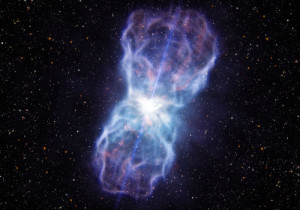
Definitely not your average black hole. These are the largest type of black holes found in the universe. Their sizes range from the order of hundreds of thousands to billions of solar masses. All galaxies, including the Milky Way, are believed to contain a supermassive black hole at their center. It is believed that these galaxies contributed greatly to the birth of galaxies and their components. NGC 4889 or Caldwell 35 harbors the largest supermassive black hole known to date. The said black hole was reported to have a mass of 21 billion solar masses. That sizes is about a dozen times larger than our entire solar system.
4. The Milky Way.100, 000-120,000 light-years in diameter
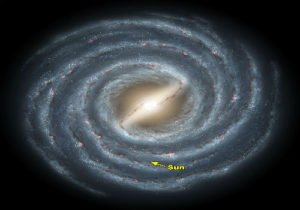
With its 100, 000 to 200, 000 light-year diameter, the Milky Way is a middleweight galaxy and harbors about 200 billion to 400 billion stars. If you’re greatly amazed by the number of stars you see in the night sky, then you’re probably be overwhelmed by the fact that you only see about 2500 stars in the Milky Way. The Milky Way continues to lose stars and produce baby stars. Also, our galaxy continues to expand as it eat ups other galaxies. Yes, our galaxy has done such phenomenon. In fact, the Sagittarius Dwarf galaxy has been consumed by Milky way and soon, it will also consume the nearest galaxy, Canis Major Dwarf Galaxy.
3. El Gordo. Biggest galaxy cluster (2×1015 Sun masses)
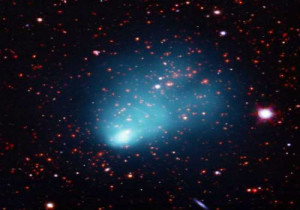
El Gordo means the fat one in Spanish and indeed this galaxy cluster is. It is the largest distant galaxy cluster to have been discovered. This galaxy is not only the largest but also “is the most massive, the hottest, and gives off the most X-rays of any known cluster at this distance or beyond”, according to the leader of this study, Felipe Menanteau. The central part of El Gordo is remarkable for releasing very bright blue colors in optical wavelengths. This is believed to have been produced by a collision and merging of two galaxies at the center of its cluster. The estimated mass of El Gordo is 3 quadrillion suns.
2. Our Universe. Estimate: 156 Billion Ly
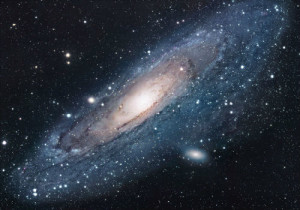
The universe is everything physical that exists. An enumeration of sizes should give us a picture of how big the universe is. The Earth is 1.27 x 10 km. The sun with a size of 1.39 x 106 km is larger than the Earth. The solar system with a size of 0.0032 light years, of course, is larger than the sun (1 light year – 9.46 x 1012 km). The Milky Way which measures 160,000 light years is ridiculously larger than the sun. The Milky Way is just dust compared to the size of the universe of 156 billion light years. The universe reminds us that our existence is merely dust to all the space and matter there is.
1. Multiverse

The concept of the multiverse is very controversial. The multiverse is basically an infinite set of universes that comprise everything that exists including physical laws and constants. One theory of the multiverse explains that the speed of light denies us the ability to see multiverses. Since there is no proof of the multiverse and basically no way to gather pieces of evidence (for now), some scientists say that the multiverse question is more of a philosophical question rather than a scientific one. Anyway, if the multiverse is true and continuously extant, then we have an infinite of infinites which we would not know how to compare size with a universe, which is also an infinite.
